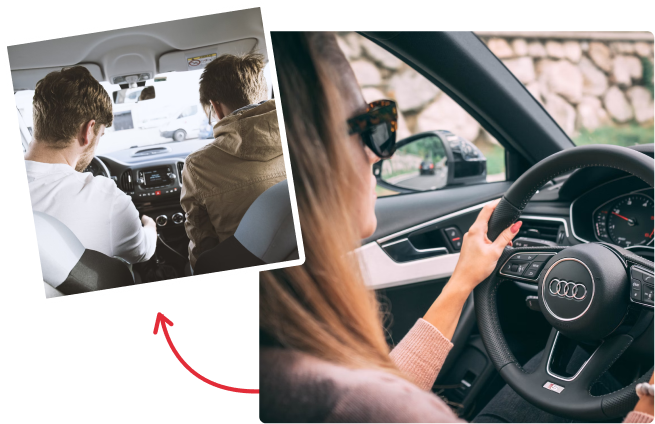It can be challenging to keep track of all the ways you’re burning fuel saving hacks while driving, but luckily there’s a new source of knowledge that can help. Your driving instructor has a few tricks up her sleeve that will help you save fuel and money by ensuring you are driving efficiently and taking advantage of certain features in your car that you may use without even knowing it. Let’s learn some of the tricks!
7 Fuel Saving Hacks by Driving Instructor
If you’re looking for fuel-saving hacks, a driving instructor is a right place. We have carefully selected some of the best tips and tricks to help you save money on fuel. Consider the following tricks to save you fuel while driving:
Keep your momentum
This is one of the best ways to reduce fuel consumption. You use more fuel when you accelerate from a steady speed than when you accelerate from a higher speed. For example, driving at 60km/h and accelerating up to 80km/h will take more fuel than accelerating from 80km/h to 100km/h. By using less accelerator pedal pressure and changing up gears earlier, you can maintain your momentum for longer periods and save fuel in the process.
Don’t keep your foot on the brake.
With modern automatic gearboxes, it is easy to forget that you have a gearstick that needs to be used. By putting your foot on the brake and not using the clutch pedal, you waste fuel by holding back pressure on the engine. Learn how to drive with one foot on the brake while using your other foot to change gears.
Tyres properly inflated
The air pressure in your tyres can affect your fuel consumption and handling of your car. If you find your vehicle is not handling very well, it could be due to low tyre pressure. To avoid this, check the tyre pressure regularly and keep them at the recommended levels according to the manufacturer’s specifications.
Stay cool while cruising on the highway.
If you are driving at 60 mph on a highway, the chances are high that you are driving with the A/C on. But this leads to increased fuel consumption and wear and tear of other vehicle parts like brakes and clutch. So if possible, switch off AC while cruising at high speeds on highways and use it only when needed.
It’s all about maintenance.
Regular servicing of your car is the key to getting better mileage and keeping your car running smoothly. Don’t wait for any warning signal to take your vehicle in for service. Regularly visit your mechanic and get your car checked on time.
Use cruise control
Cruise control allows you to drive at a steady speed without constantly pressing on the accelerator, saving gasoline and improving fuel efficiency. However, remember not to use cruise control for longer than 20 minutes as it may cause overheating problems with your engine. Use it only when necessary (for example, while driving long distances).
Make fewer trips
If you have to go somewhere, make one trip and get everything you need from there. Avoid making multiple trips to the shops or work. It will save you time and money on fuel!
Turn off your engine when waiting.
If you are stuck in traffic or waiting for lights, turn off your engine and let your car idle. You can switch to neutral while idling if it feels easier! This is because you make no engine power and use no fuel at all. This is especially useful in traffic jams because it allows other cars to pass by more easily!
Conclusion
You can save on gas by driving even smarter if you have a long commute to and from work every day. By following some driving tips and tricks of professional drivers, you can keep your gas consumption down to make every mile you drive as economically as possible.
Frequently asked Questions (FAQs)
Q. No.1: How can I improve my vehicle’s fuel efficiency?
Answer: You can improve your vehicle’s fuel efficiency by maintaining proper tire pressure, using the recommended motor oil, avoiding excessive idling, and reducing unnecessary weight in your vehicle.
Q No.2: Can using cruise control help me save fuel?
Answer: Yes, using cruise control on the highway can help you save fuel by maintaining a consistent speed and reducing the need for acceleration and deceleration.
Q No.3: Are there certain times of day when it’s better to fill up on gas?
Answer: It’s generally recommended to fill up on gas during cooler times of day, such as early morning or late evening, to avoid fuel evaporation and to ensure you’re getting the most fuel for your money.
Q No.4: Does driving at a slower speed save fuel?
Answer: Yes, driving at a slower speed can save fuel as it reduces wind resistance and allows your engine to operate more efficiently.
Q No.5: How can I avoid aggressive driving to save fuel?
Answer: You can avoid aggressive driving by maintaining a safe following distance, accelerating and braking smoothly, and avoiding sudden lane changes.
Q No.6: Can using air conditioning reduce fuel efficiency?
Answer: Yes, using air conditioning can reduce fuel efficiency as it puts extra strain on the engine. It’s recommended to use air conditioning sparingly and to turn it off when not needed.
Q No.7: Is it better to fill up my gas tank all at once or in smaller increments?
Answer: It’s generally better to fill up your gas tank all at once to avoid multiple trips to the gas station, which can waste fuel and time.
Q No.8: How can regular vehicle maintenance help improve fuel efficiency?
Answer: Regular vehicle maintenance, such as changing air filters, getting tune-ups, and fixing any issues with your vehicle’s engine, can help improve fuel efficiency and save you money in the long run.





